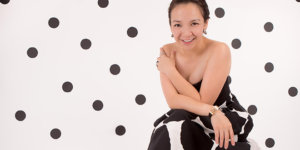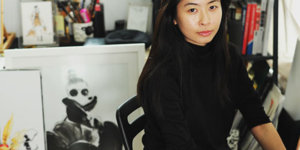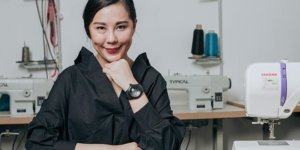GoodKids Founder Koggelavani Muniandy Builds the Foundation for a Youth Empowerment Academy
Here’s how the engineer-turned-social enterprise founder equips underprivileged youth with soft skills that will help them cope better at school and in life.

Koggelavani Muniandy, or Kogge, as most people call her, was still a full-time engineer when she first started spending her lunch breaks volunteering as a facilitator for underprivileged student programmes.
Those many hours of volunteering led her to realise the importance of addressing the non-academic issues — emotional and mental health, as well as self-esteem building — that plagues underprivileged students, causing them to act out aggressively in school.
Her desire to close that gap is what spurred her to resign from her stable career at Cradle Fund to start GoodKids Malaysia, a social enterprise that facilitates empowerment and confidence-building in underprivileged students, via performance arts. Rather than a passive session of counselling, the GoodKids method requires a high level of interaction from the students.
“The three of us — my uncle, my cousin and I decided to come up with experiential learning methods that made more use of performing arts and acting,” Kogge says, referring to her co-founders: S. Balasubramaniam, her uncle and counselling psychologist, and Naaraayini Balasubramaniam, her cousin and a musician.
In 2014, they collaborated with another non-profit to run a 20-weeks pilot programme at SMK Taman Tasik Ampang, where selected students joined GoodKids as an after school activity. Sessions involved acting and role-playing, as part of the exercise to address behavioural issues like bullying and rule-breaking.
Upon seeing resistance from the more headstrong students, the founders knew they had to include other elements to help those students participate.
To break the ice, Kogge, a musician herself, implemented a Stomp-style drumming activity which proved effective, even in strengthening overall group dynamics. “This activity worked really well in a group setting,” Kogge explains. “Even the quietest, most timid student would be brave enough to try the drums because it’s basic buckets and sticks.”
What Kogge and her co-founders didn’t expect in pursuing their noble mission at first, was the profound impact it had on many of these youths, most of whom are from troubled and unstable backgrounds. “Once they became comfortable enough to express themselves in an open and honest manner, it made a tremendous difference — more so than what counselling was able to do.”
Perhaps this was the first time they were being told that “it’s ok to make mistakes,” and are taught how to take ownership of their newfound skills. Students make their own instruments, and the weeks of role-playing and drumming culminates in a community stage performance that is open to the public. It’s the kind of intrinsic altruism that one would rarely think to associate with money, let alone profit.
Yet, financing for such a programme has to come from somewhere. How are Kogge and her co-founders making it work? She shares with us the strategies they’ve used, and her plans for growing GoodKids.
Without investors or a source of revenue, was it a hard decision for you to quit your full-time job to start GoodKids?
KM: My job at Cradle Fund had very much of a startup environment. I saw how different it was for co-founders who were committed to their mission full time, from the ones who were part-time. Seeing how much more the full-time ones could deliver in results, was like a case study for me. I knew that if I quit my job and focused on GoodKids, I could give it 100 percent and take it to where we want it to be. For the first few months, there was no income coming in at all for GoodKids. I supplemented my income on the side with photography for events and portraits.
It is really fulfilling to be able to do this, compared to all the other stuff I’ve done.
How did you come up with the name GoodKids?
KM: We wanted the kids who were part of the programme to associate themselves with a positive name, rather than something like “naughty boy”. My uncle, who is a GoodKids co-founder and counselling psychologist, believed that if we don’t tell them that they are good kids, they will never believe it themselves.
The name works really well, because now we can see that many of them are truly proud to identify themselves as a “good kid”. We have a hashtag, and we give them a t-shirt that says #iamagoodkid.
You joined the MAGIC accelerator programme for social enterprise startups. How did the programme help to grow GoodKids?
KM: Being in MAGIC was very helpful, they brought in successful social entrepreneurs to share experiences and helped me think beyond my boundaries. Since I was already familiar with the industry, it was also easier to network and find those who could guide me, instead of waiting for introductions.
When we went into the accelerator programme in August 2015, we had zero funding, and even our training module was not complete.
But we had very good account managers taking care of my project, who helped drill it down and pushed me to my limits.
It was also through MAGIC’s networking events that I got connected to the ECM Libra Foundation, which gave us our first grant to kickstart the programme in 2016.
Tell us more about how you secured that first grant.
KM: The ECM Libra Foundation supports educational and children and youth empowerment programs. When I first met them, they could relate to the problem that we were addressing in GoodKids, but it took a little more convincing, as we were one of the first long-term programmes that they were going to support.
Our team, comprising of us three co-founders bringing different strengths to the programme, convinced them that our proposal was well thought through. Thanks to my account managers at MAGIC, we had impact measurement strategies in place, which pleased the team in the Foundation.
Still, they only support costs that go directly to our beneficiary. I realised that we have to be self-sustainable and create our own revenue for other organisational costs.
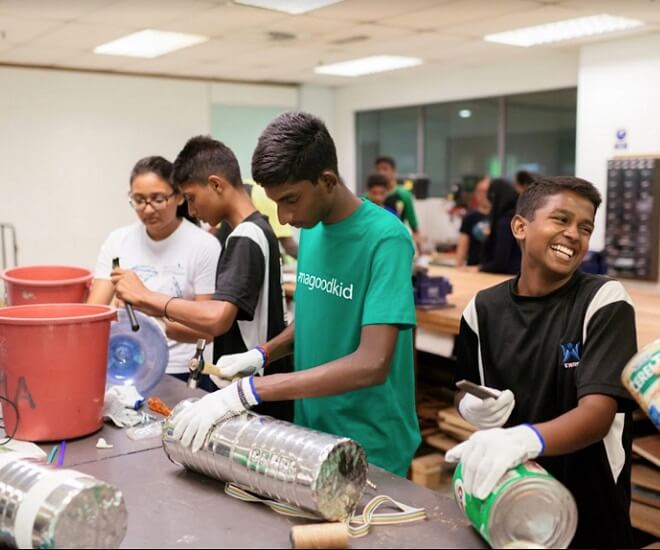
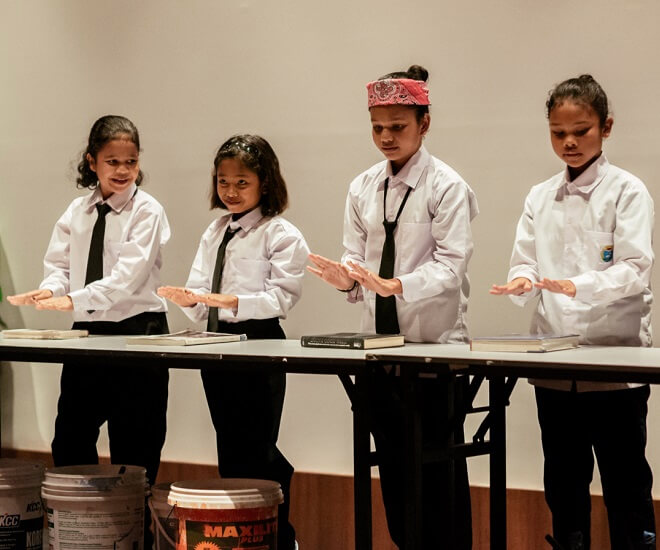
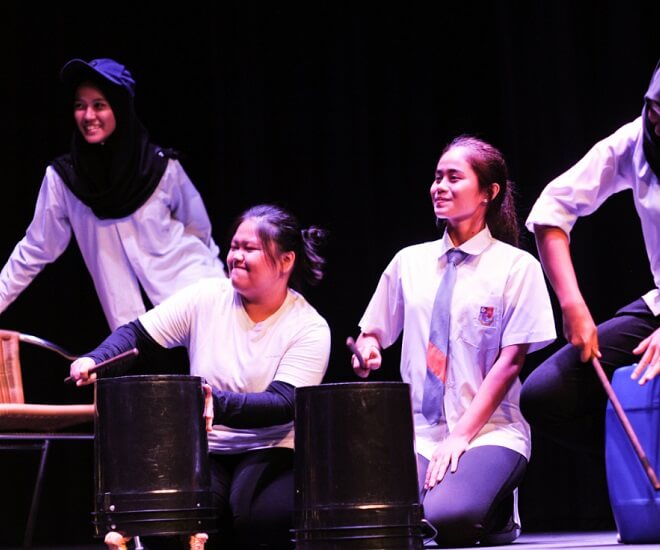
What are some income-generating ideas that you’ve tried out, to raise funds for GoodKids?
KM: I considered many ideas, like putting on shows, giving classes to the public, and even holiday camps. Our annual GoodKids League show, where we sell tickets for RM50 and RM80, brings in some money. But in Malaysia, you have to be super popular to get the numbers. We’ve also been selling t-shirts with the hashtag “iamagoodkid” made from recycled fabric. It’s friends and family of ours and the kids themselves who are very supportive and buy the t-shirts.
Can you share some of your plans for growing GoodKids?
KM: Hopefully, we can branch out to giving more types of classes that become the foundation of a full academy. Every student needs an extracurricular programme like this, be it performing arts, sports or cooking. We’re looking at collaborating with other organisations who want to do this on the side.
We are planning more classes for the public. This year, we kicked off performing arts classes for adults, which is going very well. Acting and music also helps adults express themselves, boost confidence and discover their passion. Many of them thank us for providing them an avenue to enjoy themselves, while reliving their childhood.
What is a key lesson you’ve taken from your journey thus far, that you feel all entrepreneurs should know about?
KM: You cannot be 100 percent ready before going to meet an investor. When I went to meet my first investor, I only had a deck, but the execution was not documented like a typical project management plan, with resources and a timeline.
I know people who’ve had an idea for one or two years, and they’re still waiting to execute, because they feel like they aren’t ready to speak to someone. But I would say, you’ve got to throw your idea out there. It’s ok to look stupid, because only then you will know that you really look stupid. If you make a mistake, you will learn to deal with it.





